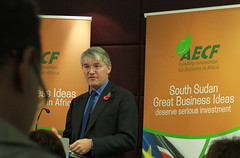Business and Market Overview on Philippines
ECONOMY. Philippines's economy suffered through mismanagement under the country's late president Marcos who ruled the country under martial law from the 1960s to 1980s. To revive the country's economy, former president Fidel Ramos opened the country to foreign investments in the early 1990s. During Ramos' term in office, foreign investments increased from only US$ 42 million in 1992 to US$ 2 billion by 1997. The Philippines weathered the Asian economic crisis of 1997 in much better shape than many other Southeast Asian countries due to the large number of Filipino overseas workers regularly remitting money into the country and low external debt.
Philippines' GDP was US$ 85.1 billion with a GDP per capita of US$ 1,042 in 2004. The economy of the Philippines grew at annual GDP growth averaging 4.6% from 2000 to 2004 contributed mainly by growth in the service sector, agriculture and exports of electronics. Inflation declined from 6.5% in 2000 to 2.5% in 2002 bu t trended upwards to reach 8.6% by 2004. Unemployment remains relatively high compared to Thailand, Malaysia and Singapore ranging between 9.8% and 10.9% from 2000 to 2004.
The service sector contributes to half or 52.8% of the Philippines' GDP in 2004 while manufacturing contributed 31.8% and agriculture 15.3%. Major industries include electronics, garments, footwear, pharmaceuticals, chemicals, wood products, processed foods, petroleum refining and fishing. Major agriculture products include sugarcane, coconuts, rice, corn, bananas, cassavas, pineapples, mangoes and seafood.
DEMOGRAPHY. The Philippines comprises of nearly 7,100 islands but eleven islands account for 90% of the country's total population. Main islands are Luzon and Mindanao accounting for 65% of the population. Other major but less populated islands include Negros, Samar, Panay and Palawan. Filipino society and culture is nearly homogeneous and 90% of the population are of the Malay descent. Oth er ethnic groups include the various indigenous tribes and Chinese immigrants. Spanish-Mexican culture brought by the former Spanish colonial rulers who ruled the country from Mexico has an influence of Filipino culture. The country is predominantly Catholic accounting for 81% of the population followed by various Christian denominations (11%) and Islam (5%). Tagalog is the national language and widely spoken across the islands while English is predominantly used in government and business.
The proportion of the Filipino population living in the urban areas increased from 49% in 1990 to 62% by 2004. Philippines' main city is Metro Manila (comprising of the city of Manila and 16 surrounding cities and municipalities) has a population of 10 million. Other major cities include Zamboanga, Baguio, Iloilo, Bacolod, Cebu City, Davao and Cagayan de Oro.
The Philippines suffers from a high level of income inequality and an estimated 30% of the population live below the po verty level. Another 50% of the population belong to the low-income group while the remaining 20% belonging to the middle and high-income group. The average income of those living in Metro Manila is twice than the national average.
INFRASTRUCTURE. Telecommunication services within and between the islands is adequate while international services is relatively good. Internet broadband coverage is mainly concentrated in the major cities and towns of the islands. The islands are adequately served by roads and road transport. Travels between the islands are by air or coastal boats. All the major islands are served by international and domestic airports and sea ports.
INTERNATIONAL TRADE. Philippines's exports increased nearly 4-folds from 1995 to 2004. Major trading partners include Japan, US, China, Hong Kong, Singapore, Malaysia, Taiwan and South Korea. Main exports from the Philippines include electronics, garments, optical instruments, coconut products, fresh prod uce, copper products and chemicals. Main imports include machineries, equipments, fuel, vehicles, transport equipments, plastics chemicals and food grains.
CONSUMER USAGE OF TECHNOLOGY. The total number of fixed-line telephones installed in the Philippines was 3.4 million or a penetration of 8 fixed-line phones per 100 population in 2004. However, the penetration for mobile phones is much higher at 39 mobile phones per 100 population. The penetration of computers in the country is low estimated at 2% of the population while the estimated number of internet subscribers is 1.2 million and internet users is 8.0 million. The average penetration of televisions among households in the Philippines is 71% but higher in the Metro Manila at 96%.
RETAIL MARKET. There are nearly 360,000 retail establishments and the traditional "mom and pop" stores account for 98% of the establishments. The remaining 2% are the store brands comprising of hypermarkets, supermarkets, departmen t stores, convenience stores and speciality stores. Shopping in these establishments is popular among middle and high-income consumers. These modern outlets are mostly concentrated in Metro Manila accounting for 30% of the Philippines' total retail sales. However, many store brands are expanding their businesses outside Metro Manila into other major urban areas in Luzon and Mindanao. Between 2004 and 2007 and estimated three shopping malls will be built in the Philippines annually.
FOOD CULTURE. Like most countries in Southeast Asia and Northeast Asia, rice is the staple food in the Philippines. Filipino cooking is a blend of sweet, sour and spicy tastes. Indian, Chinese, Japanese, Mexican and Spanish cooking have an influence on Filipino food culture. Traders and immigrants introduced Indian, Chinese and Japanese cooking while the Spanish colonial rulers introduced Mexican and Spanish cooking. Filipinos are also accustomed to western foods especially American style fa st foods, bakeries and snacks.
Khal Mastan is a Senior Consultant with Pegasus Business and Market Advisory ([http://bma.pegasus-asia.com]) based in Malaysia. He involves himself in business and marketing research and provides consulting services on markets in Southeast Asia namely Malaysia, Thailand, Singapore, Indonesia, Philippines and Brunei. He has more than 20 years experience in the region and work experience in various industries. He holds a bachelors degree in Biochemistry and an MBA. He can be contacted at khalzuri@pegasus-asia.com or +6 (03) 7726 5373 in Malaysia.
Article Source: http://EzineArtibles.com/?expert=Khal_Mastan
